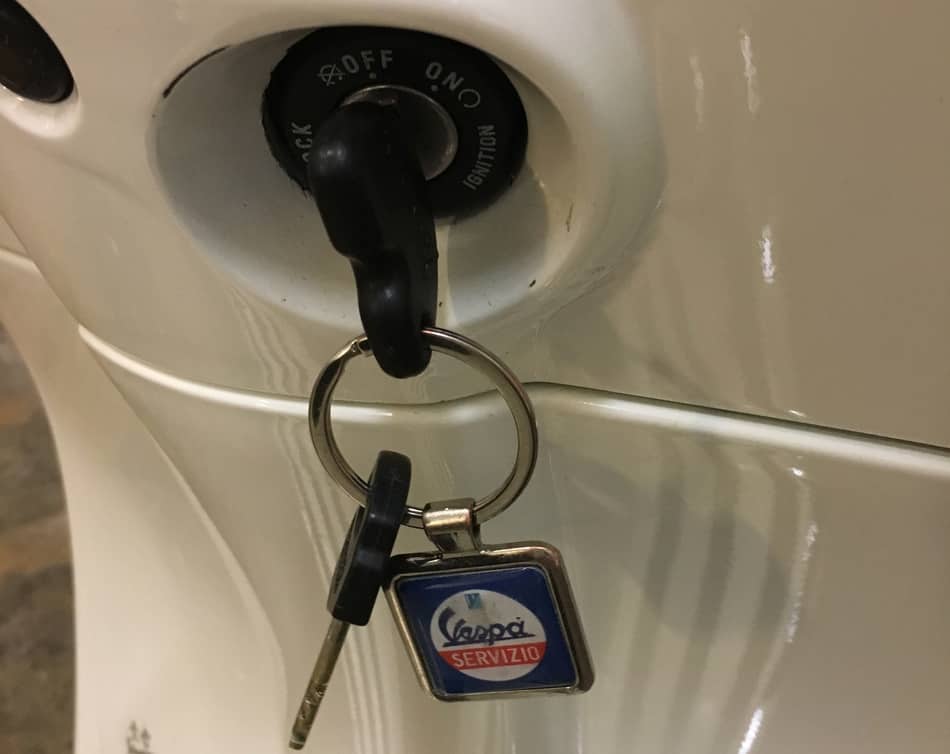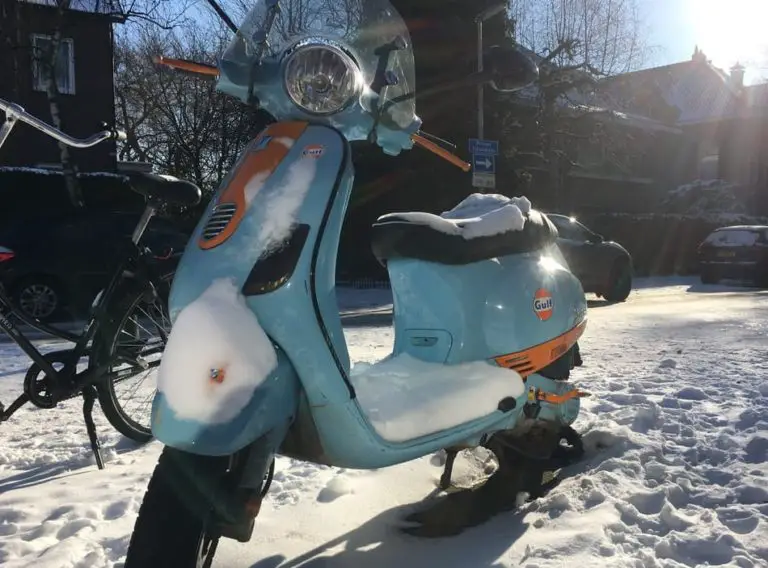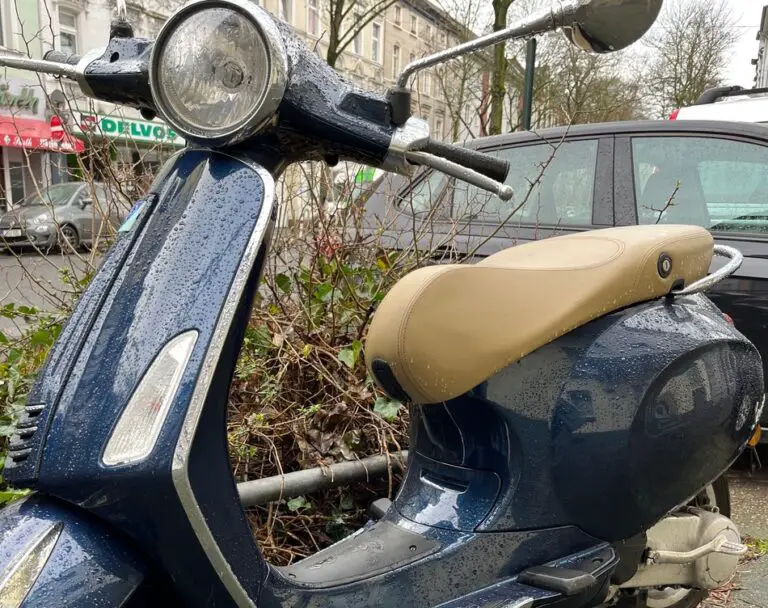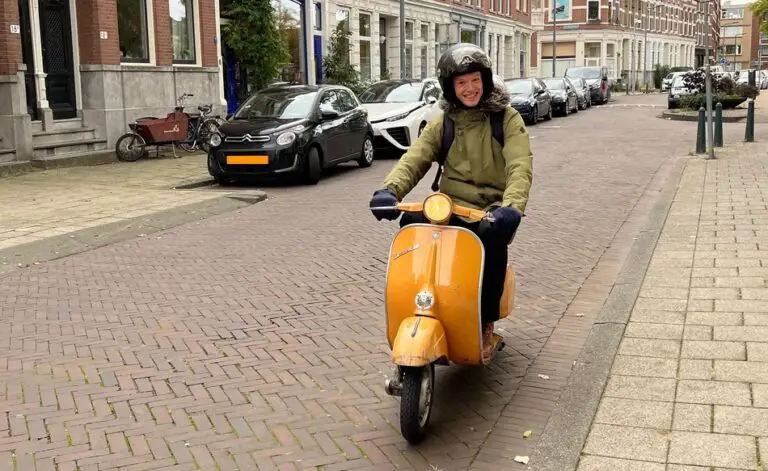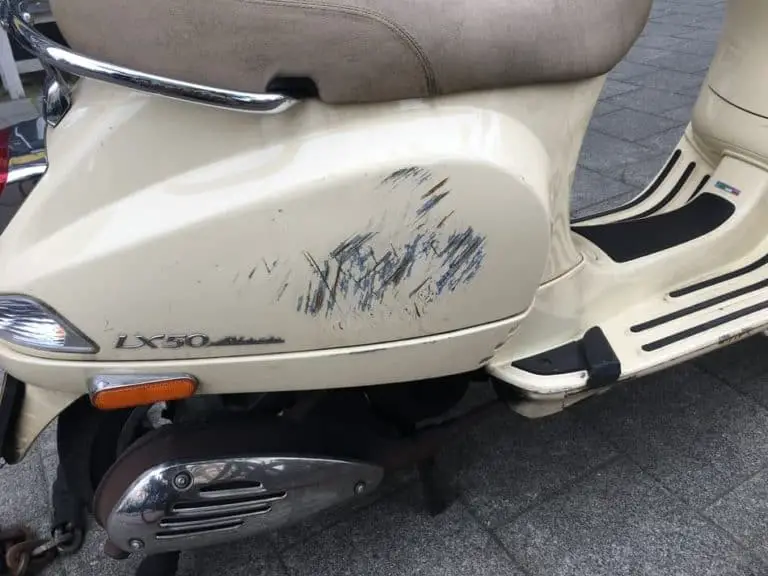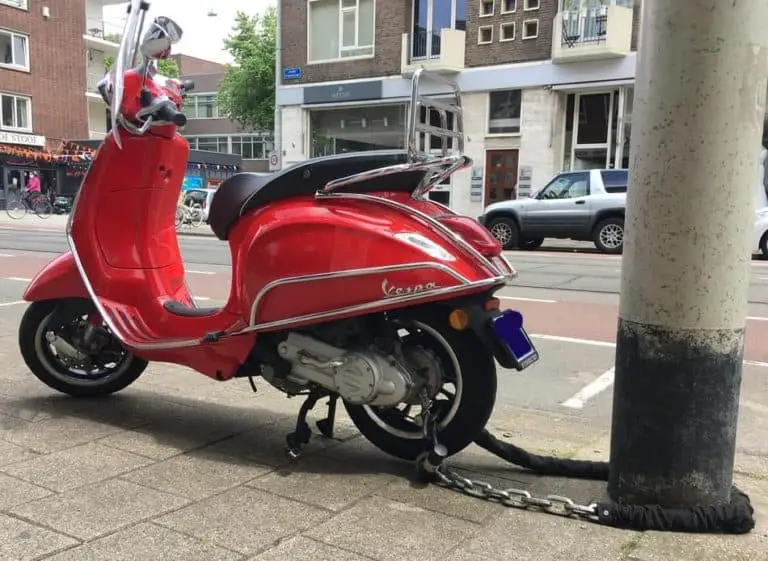How To Start A Vespa? 4 Things To Check When It Won’t Start
All automatic Vespas have an electric starter. You will have it started within seconds without breaking a sweat. Since it is so easy, after a while you kind of forget to check if there are other ways to start a Vespa. So what to do if the Vespa suddenly doesn’t want to start?
Besides the lack of petrol, the most common reason why an automatic Vespa doesn’t want to start is a dead battery. Don’t worry, it isn’t a lost cause. There is always the good old way to start a Vespa. You use the kickstart (models until 2017) like you do when you want to start a classic Vespa.
But how does that work? We will go more into detail on how to start an automatic and a classic Vespa followed by things you can do if you just can’t get the scooter up and running. Continue reading to find out what the 4 steps are to start your automatic and classic Vespa, even if you can’t get it going
1. Know how to start a Vespa correctly
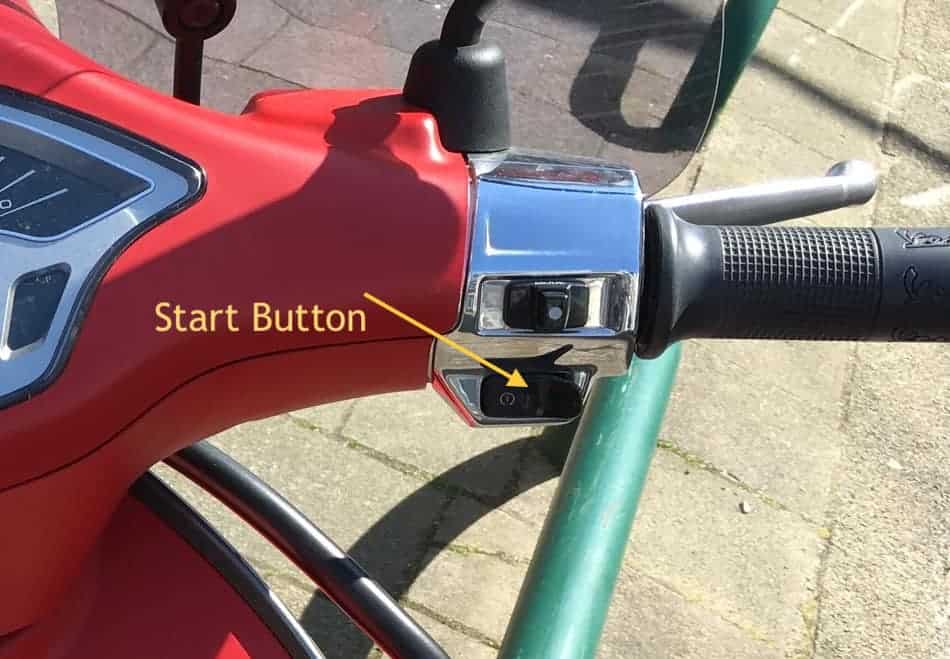
If you have never ever driven a Vespa before then you might want to check our other post where we describe step by step how to ride (and start) an automatic or classic Vespa for the very first time.
For those who have driven before then, you can double-check if you are starting your Vespa correctly. An automatic modern Vespa is easy to start. Before starting the engine it is best to take the Vespa off the stand first and take a seat.
Place the key in the ignition switch and turn it towards the right into the ‘ON’ position. The display will illuminate. Then hold one of the brake levers. I always recommend the left one to avoid accidentally pulling the throttle handle located near the start button on the right.
When squeezing the left brake lever, push the start button with your right thumb. The engine should start immediately and be in its idling position.
Don’t use the throttle at the same time you push the start button if you feel the engine will not start. Just try again. The Vespa has an automatic choke that will regulate the fuel-air mixture to the cold engine. If you twist the throttle while starting the engine, then the engine might overflow.
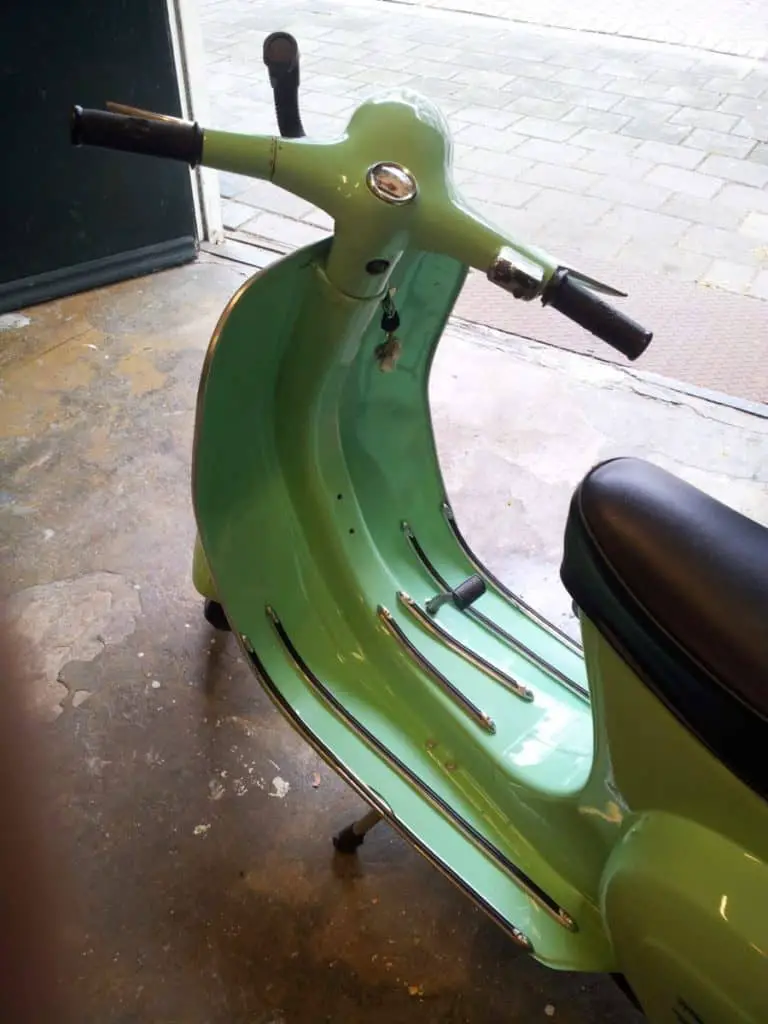
Do you have a classic Vespa?
Starting a classic Vespa needs a bit more attention. Classic Vespa engines are tuned slightly differently. So some can start immediately while others might take a bit longer.
When starting a classic Vespa you need to check if two things are properly set:
- The fuel valve/petcock and
- Choke pull handle.
Both are located in the frame, just under the seat. Set it in the correct position according to the situation.
Choke: it is wise to pull out the choke handle only if the engine is still cold (cold-start). Using the choke will restrict the airflow and enrich the fuel-air mixture in the engine. The engine will get more fuel through the combustion chamber enabling the engine to start when it is cold. Once the Vespa is running, wait a couple of minutes with the choke out, then push it back. You do not want to drive with the choke as this will increase fuel consumption and eventually affect the performance of the engine.
Fuel Valve/petcock: The fuel valve of a classic Vespa has three positions (when seated and facing from above):
- Closed (C): the valve is turned to the left. The letter C is visible. This means that the fuel valve is closed. When parking your Vespa you should always turn it to this position.
- Reserve (R): the valve is turned to the right. The letter R is visible. This means that the fuel valve is set to the reserve tank. This should be done when the gas in the main tank is empty.
- Valve is facing up: the valve is pointing upwards. The fuel valve should be in this position when starting and driving the Vespa.
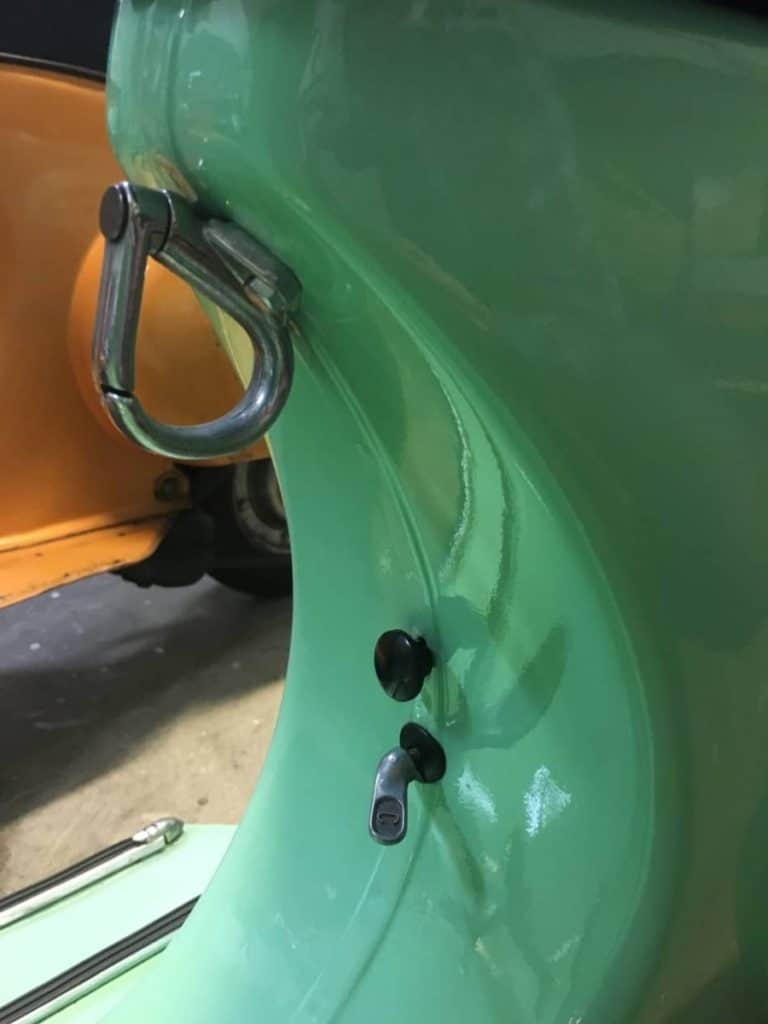
Once the choke and the fuel valve are in the correct position it is time to start the engine. Most classic Vespas do not need a key to start. The key is only used for the steering lock. If the classic Vespa has a key for ignition, turn it in the correct position.
Now set the gear in ‘neutral’. You will know if it is neutral if you are able to move the Vespa. If the wheels seem jammed it is not in neutral.
When the engine is still cold I recommend placing the Vespa on the center stand. When you need to stop when driving and the engine dies, you can also start without getting off. The engine is warm and will therefore start easier.
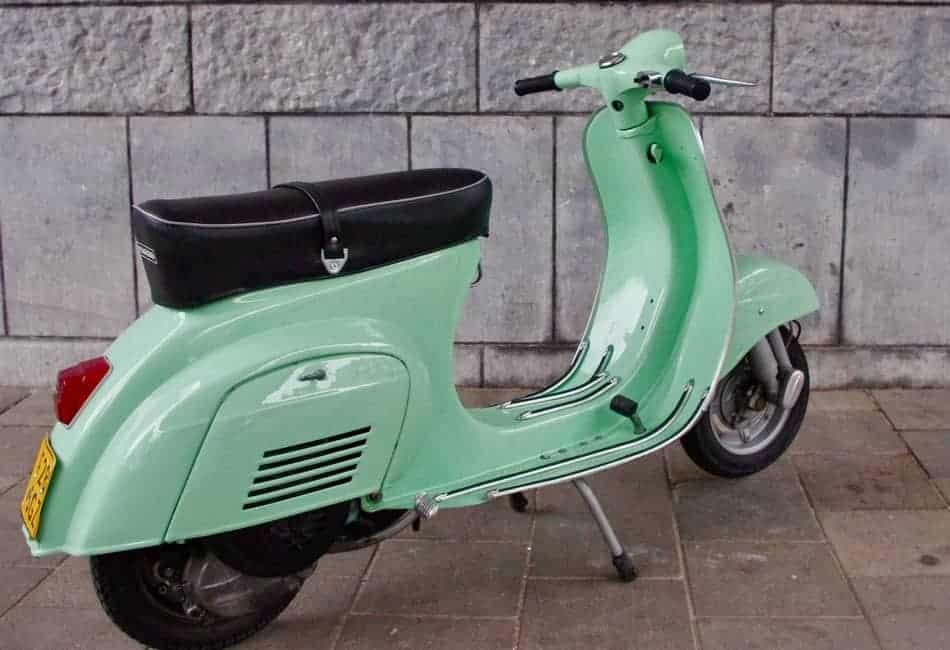
Then while standing on the right side of the Vespa put your feet on the kick start lever. I usually use my right foot. Hold both handles and push the kickstart lever down firmly. You will feel some pressure, which is a good thing. After a couple of attempts, the engines should start running.
Turn the throttle a bit to have the gas flowing through the engine. Then pull the throttle back to the original position and take a seat. Push the Vespa forward to get it off the center stand. Once the engine has been running for a minute or so, close the choke.
Don’t want to use the kick lever to start your classic Vespa?
If it takes too long to start your classic Vespa with the kick start, then there is another option to start it. Again check whether or not the choke and the fuel valve are in the correct position. Then take the Vespa off the center stand and place it in first gear. Then let go of the gear lever and start running. You will feel some counter-pressure but at the same time hear the engine waking up. Keep running until the Vespa starts, then jump on the seat, squeeze the gear handle and use the throttle slightly to get the gas flowing through the engine.
I prefer to stand on the left side of the Vespa when holding on to the handlebars while I run. You must feel comfortable with the weight and balance of the Vespa when starting it this way. Also, make sure there is no traffic and other objects in your way so you can start the Vespa without any obstructions.
2. Check the key position, petrol, and kill switch
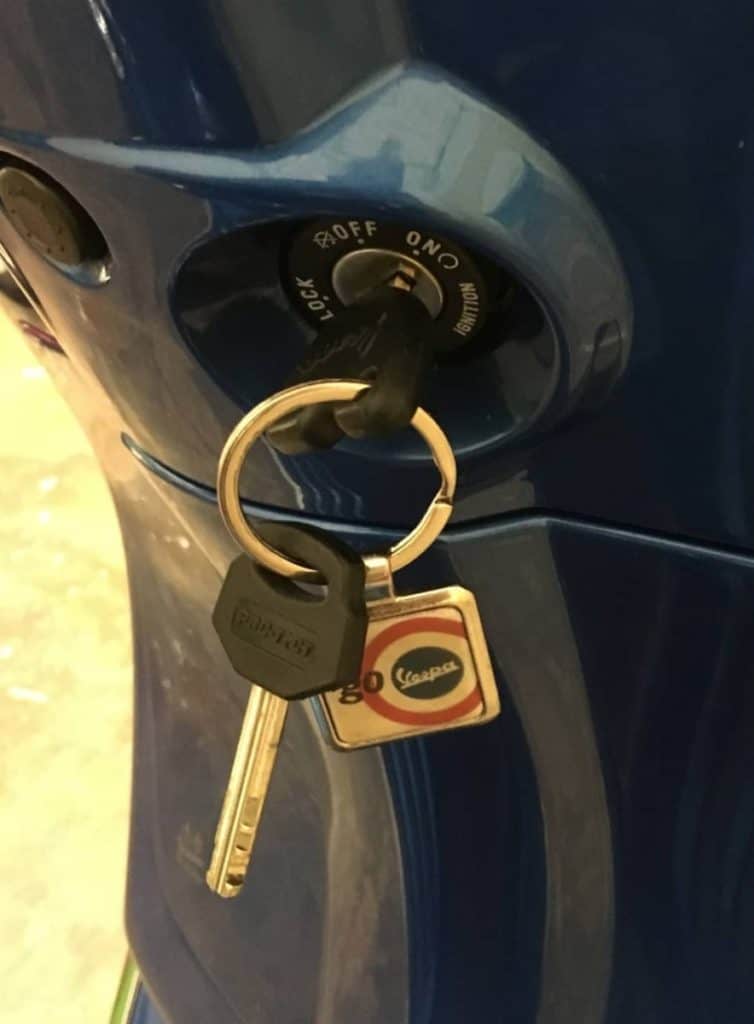
When your Vespa doesn’t want to start after several attempts, check these simple things first. They might sound silly, but it would be even more silly if this was the problem after checking every other part of your Vespa first.
- key in the wrong position – Is the key turned all the way to the right position? All the lights on your dashboard should be on. This is only for modern Vespas. Most classic Vespas do not need a key to start the engine.
- petrol – do you have enough petrol? In the case of a classic Vespa, is the fuel valve in the correct position? It should be facing up or in R (Reserve)
- kill switch (if applicable)- Is it in the RUN/ON position or jammed?
The kill switch/engine stop button
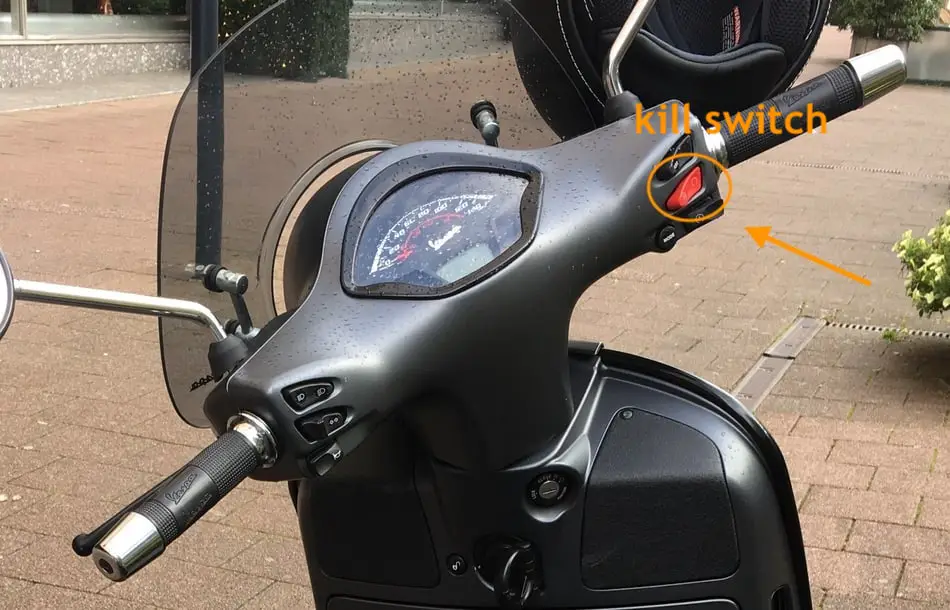
All automatic Vespas with an engine displacement of 150cc or higher have a kill switch. Classic Vespas always have a kill switch whether or not it is a large or a small frame.
In the case of a modern Vespa, the kill switch is the red-colored button located above the ignition switch. This switch is used if you need to switch off the engine in an emergency situation and/or you are not able to reach the key switch. When you use the kill switch, the engine only shuts down but the electrical system is still engaged.
So if the kill switch is on and you turn the key, the display will illuminate but the engine will not start. If you don’t check the kill switch before starting the engine you might think that something else is wrong with your Vespa.
Be aware that the kill switch could accidentally be switched on when you lift the seat to reach the compartment area and it touches the steering wheel. Chances are small but you never know, perhaps you unknowingly switched it on.
The kill switch on a classic Vespa is located on the right-hand side, on the side of the silver display with the other buttons such as the lights and the horn. Since most classic Vespas do not have a key switch, you will need to use the kill switch to turn the engine off. The problem with this switch is that it is tiny and sensitive. It can get jammed easily and will prevent your Vespa from starting. To solve this problem just remove and replace the silver covering and the kill switch should pop out again.
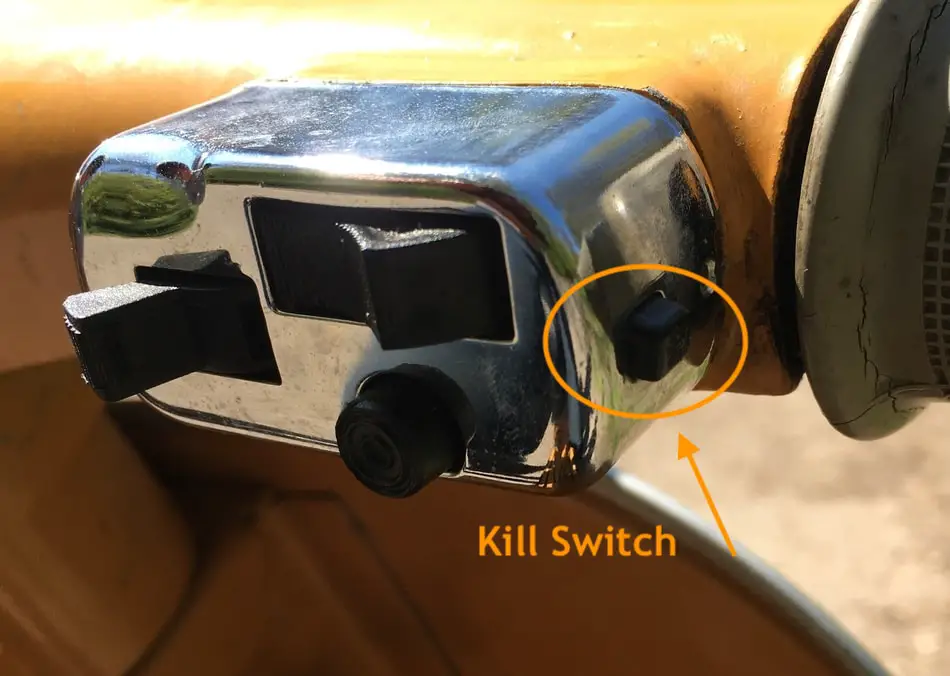
3. Kick start your Vespa with a dead battery
If you have tried all the above and your Vespa doesn’t want to start with the start button, then chances are that your battery is dead or your electric starter is broken. You know which one by the following:
Dead battery– turn the key to ON. If the display doesn’t illuminate, or the brake lights or the indicators do not work, then you need to have your battery checked. If you do not know where your battery is located, we have explained it in an article on Vespa batteries.
Electric starter has broken – check the fuses or CDI. If the fuses are good, then you might have a problem with the starter. Best to have a mechanic look into this.
In the past, you didn’t need the electric start to have your Vespa engine running. If your battery was dead you could always start your Vespa with the kick start. However, the latest GTS, Primavera, and Sprint Vespa models do not have a kickstart anymore. Piaggio suddenly removed it from its Vespa scooters.
The kickstart on modern Vespas should only be used for emergency purposes. If you use it while your battery is still ok then it will affect the quality of the battery. So maybe that is the reason why Piaggio removed it. But if you do have an older Vespa model then you can use the kickstart to have your scooter running again.
So how to use the kickstart on a Vespa?
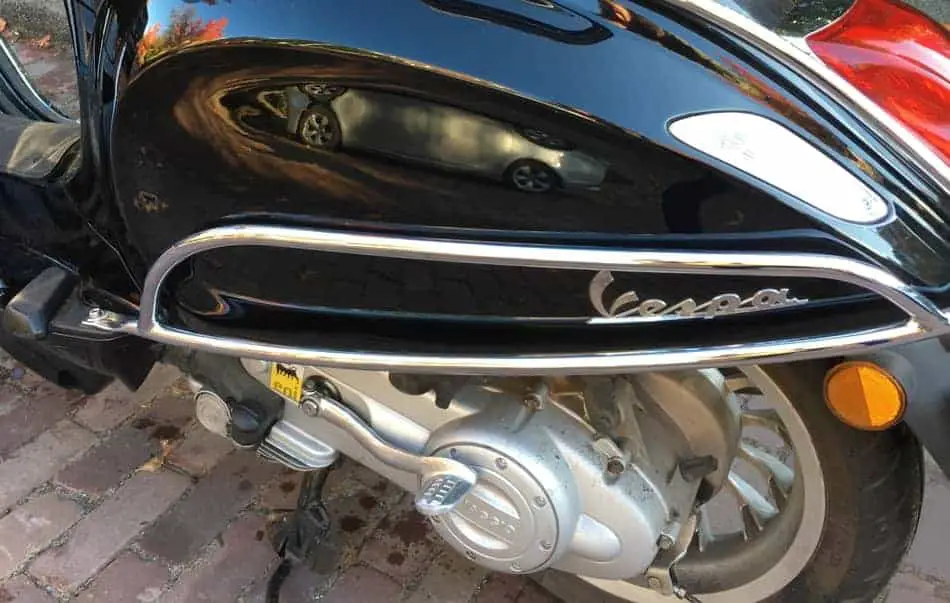
Place the Vespa on the center stand and the key in the ignition switch. Turn the key to the ‘ON’ position. Then stand on the right side of the Vespa and place your right foot on the kickstand. At the same time hold on to the handlebars to stabilize yourself. Do not squeeze the brakes. If you do so, the engine will not start.
Then push your foot firmly down while at the same time pull the throttle just slightly. 1/3 throttle should be enough. You will hear the engine wanting to start. It might take a lot of attempts for it to run.
Using the kickstart when the engine is still cold can be exhausting and pretty difficult, especially if you are short and can just reach the throttle handle. You can always ask somebody to help you with the throttle, while you try to start the Vespa with the kickstart.
4. Check the spark plug, fuel feed, and compression
Have you checked all the above and your Vespa is still not starting? Then you need to do more thorough basic checks. A Vespa needs 3 things to start: fuel, spark, and compression. So if your Vespa isn’t starting then you should check these first.
If it is too daunting for you, then it is still wise to gain a bit of knowledge about what the problems can be before heading to the workshop. At least you know what they are talking about once they have the Vespa up and running again.
Everybody has their own sequence of this basic check. I always start with the spark plug as this is the easiest and chances are this is the problem.
Check the condition of the spark plug
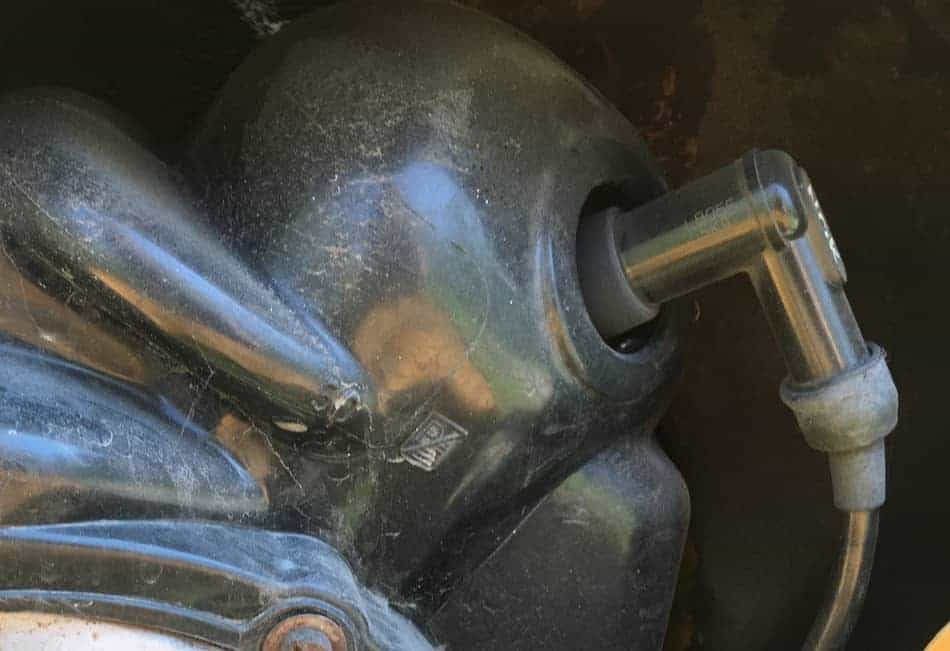
Now it is time to check if the spark plug, spark plug wires or ignition coil is working correctly. On a classic and a 2-stroke modern Vespa, it is pretty easy to reach the spark plug. For a 4 stroke, this is a different story if you don’t have the proper tool. So before you start to remove the spark plug you should check if the cable to the ignition coil is working. The other major reason why an engine won’t start is due to the engine not getting the right spark.
All you need to do is pull the spark plug cap off. The spark plug will still be inserted into the ignition coil. With the spark plug cap in your hand, place a new spark plug into it. If you don’t have a new spark plug, you have to remove the existing one.
Once you have placed the spark plug into the plug cap, hold on to the rubber part while placing the other end (the metal threaded part) on something metal such as the frame or the head of the cylinder. Make sure you are not touching the end of the spark plug or the Vespa. It will give you an electric shock.
Finally, press the electric start button. In the case of the classic Vespa, press the kick lever down. There should be a spark on the metal. If not, then something is wrong with the connection.
Do you get a spark? Luckily the connection is good. So it has to be the spark plug. A dirty or old spark plug might be the cause of your Vespa not starting. While you might have a spark, it might not be enough for the engine to start. Clean the existing spark plug or replace it with a new one.
On a 2-stroke classic Vespa the spark plug can get dirty quickly, so always have a spare one on you when going for long trips.
Is your Vespa still not starting? Let’s have a look at the next step.
Check the fuel feed
After checking the presence of fuel, it is time to look if the fuel intake to the carburetor is working. All you need to do is pop open the Vespa seat and remove the stowage bucket to get access to the carburetor.
The fuel tap is located under the gas tank on the right side. There are two hoses connected to it. Usually, the transparent one is the vacuum hose. The other one is the fuel hose which is connected to the carburetor. Check if both hoses are in good condition. If all is well, dislocate the fuel hose by simply pulling it off. There shouldn’t be any gas coming out. If so, then your carburetor might be getting too much gas which makes it difficult to start. You will need to check the fuel tap.
No fuel present? Let’s check the condition of the fuel flow. Without touching anything, use the kickstart. Gas should be dripping from the fuel hose now. If not, then there is something preventing the gas from flowing into the carburetor. It can be an obstruction in the fuel hose or the vacuum hose needs to be replaced.
Check the compression
The carburetor ensures that the air-fuel ratio to the engine is correct. An incorrect air-fuel ratio can be caused by a dirty carburetor. To check if this is the problem, you need to dislocate the fuel intake hose which is connected to the carburetor. Spray a bit of carburetor cleaner onto the carburetor. Then try to start the engine with the start button while turning the throttle a couple of times.
If the engine starts and runs for a bit then the problem is the carburetor. A bit of dirt can already cause problems with the carburetor so it is a common issue.
Many Vespa owners clean their carburetor themselves. You need to know how to do this to avoid creating more damage. We always suggest finding an old one and taking it apart to see how everything is connected and how it works. Again, if this is all too much for you it is wise to head to the workshop to have the carburetor fixed.

